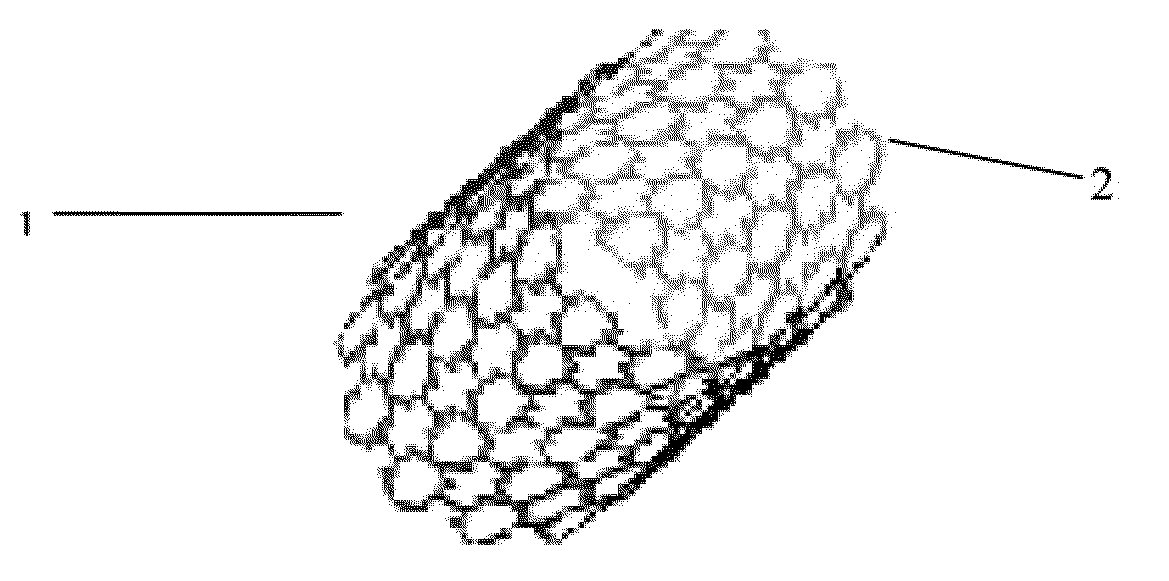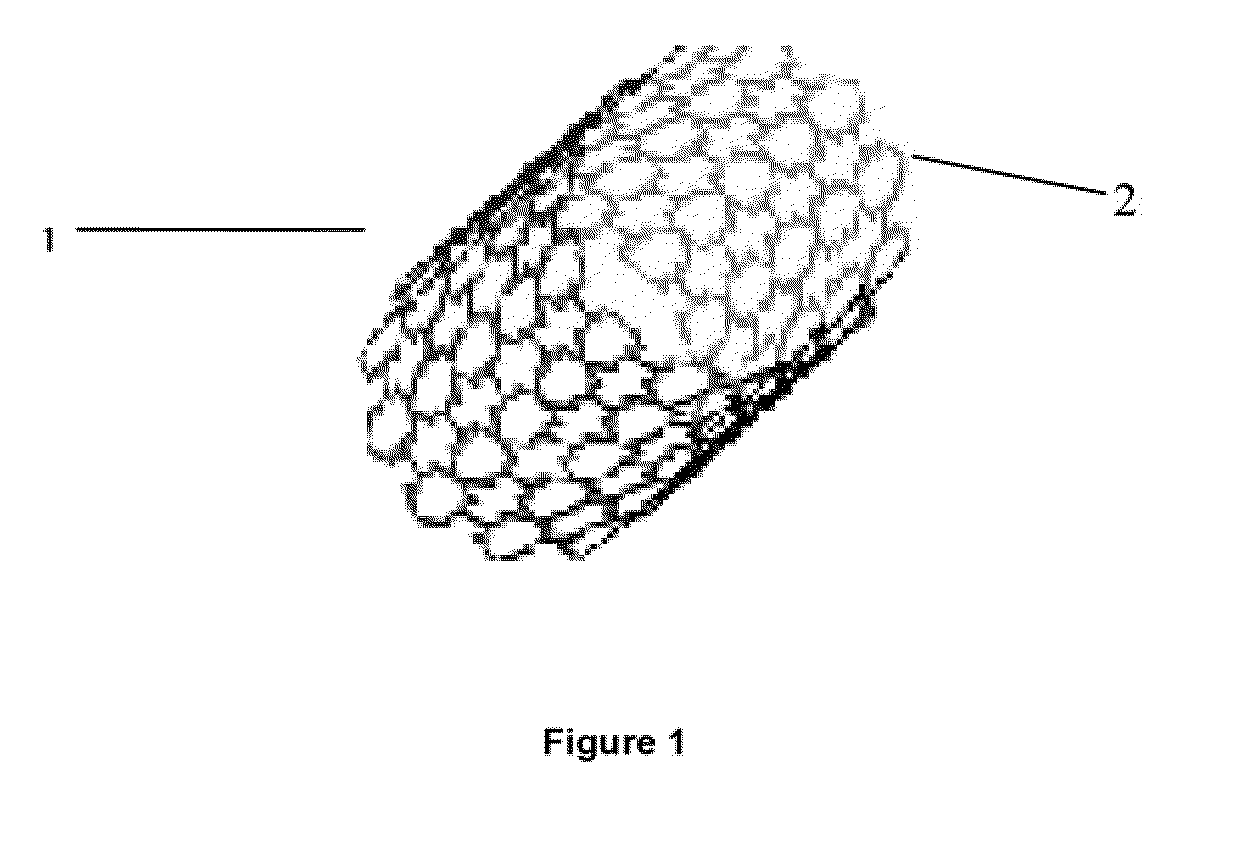Biodegradable stent formed with polymer-bioceramic nanoparticle composite and method of making the same
- Summary
- Abstract
- Description
- Claims
- Application Information
AI Technical Summary
Benefits of technology
Problems solved by technology
Method used
Image
Examples
example 1
PLGA / ACP Composite Preparing and Tube Extrusion
[0092]In the study, all PLGA pellet were first grinded to the particle size of 200 nm with an electrical grinder at 25,000 RPM. 4 grams of ACP (size: 100-150 nm) were mixed with 200 gram grinded PLGA nanoparticle and continuously blended with the same electrical grinder for another ten minutes for uniformly mixing. Both the PLGA and the PLGA / ACP composite mixture were then extruded through a signal screw extruder with a puller at 200 degree C. The extruded tubing has an outside diameter of 1.8 mm and wall thickness of 150 um. Microscopic observation showed that the tube extruded with PLGA only material is clear, colorless, while the tube extruded with PLGA / ACP composite (ACP:PLGA=2:98) is bone-white and the ACP particles were uniformly dispersed among PLGA polymers.
examples 2
Stent Fabrication from PLGA / ACP Composite
[0093]Tubes extruded from Example 1 study were cut from a femtosecond laser according to design specification. The stent strut thickness is 150 um which is the same as the tube thickness. FIG. 1 is the stent image made from PLGA / ACP composite.
examples 3
Mechanic Property Measurement of Tube Extruded from PLGA / ACP Composite
[0094]Tubes extruded from both PLGA and PLGA / ACP composite using a plastic-extruder during Example 1 study were further subjected for mechanical properties test. In the study, the tensile strength and radial strength of both tubes were measured with a catheter tensile / radial strength testing machine (Model 4400R, Instron, Inc. Nonvood, Mass.). As shown in FIG. 6, the tube made from PLGA / ACP composite has a significantly higher maximum tensile-load-at-break (A, 96.29±2.15N vs. 71.11±3.21N, n=6, P<0.001) and maximum radial-strength (load)-at-crush (B, 470±3.20N vs. 400±2.09N, N=6, P<0.001) than that in the PLGA only tube.
PUM
| Property | Measurement | Unit |
|---|---|---|
| Time | aaaaa | aaaaa |
| Adhesion strength | aaaaa | aaaaa |
| Mechanical properties | aaaaa | aaaaa |
Abstract
Description
Claims
Application Information
 Login to View More
Login to View More - R&D
- Intellectual Property
- Life Sciences
- Materials
- Tech Scout
- Unparalleled Data Quality
- Higher Quality Content
- 60% Fewer Hallucinations
Browse by: Latest US Patents, China's latest patents, Technical Efficacy Thesaurus, Application Domain, Technology Topic, Popular Technical Reports.
© 2025 PatSnap. All rights reserved.Legal|Privacy policy|Modern Slavery Act Transparency Statement|Sitemap|About US| Contact US: help@patsnap.com



